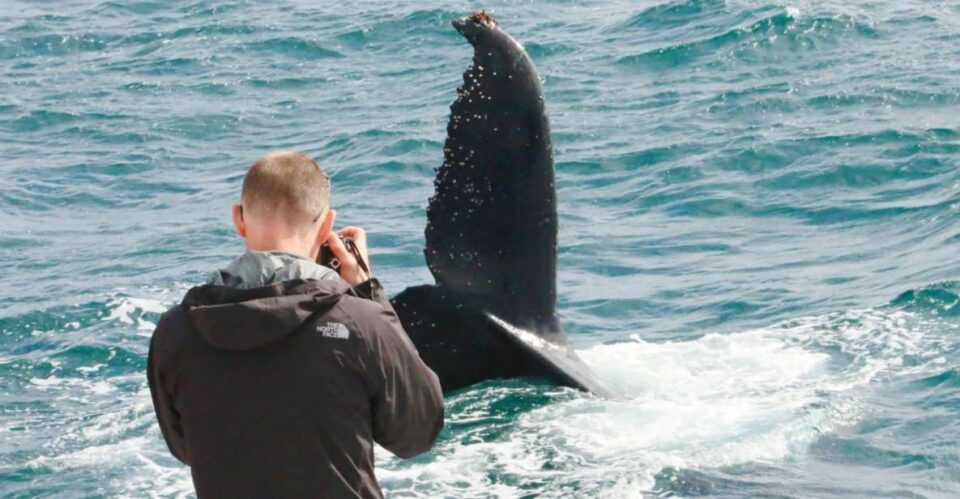Bremer Bay, which is in the middle of Australia’s untamed Western Coast, is a haven for animal aficionados and environment lovers, offering a breathtaking combination of sunlit cliffs and marine life. Among its fascinating residents is the orca, a legendary and intelligent creature known for its formidable hunting skills. In this comprehensive guide, we’ll offer a unique window on the world of orcas Bremer Bay, considering their diet, hunting strategies, and evolutionary lineage, as well as tips for those seeking to witness these magnificent animals in their natural habitat, including Dunsborough, Western Australia whale watching options.
Orcas in Bremer Bay: A Unique Population
The Orcinus orca population, which includes the orcas of Bremer Bay, is a unique group of strong predators recognised for their complex social structures and specialised hunting techniques. Unlike their migratory counterparts that traversed great distances in pursuit of their food, the orcas of Bremer Bay are chiefly recognised for their annual seasonal gatherings here from January to April.
Dietary Preferences of Bremer Bay Orcas
The dietary preferences of orcas Bremer Bay reflect their worldwide notoriety as fearsome hunters. The apex predators in these nutrient-rich seas prey largely on marine mammals, much like their counterparts throughout the world. Together with smaller cetaceans like dolphins, this also includes the local seals and sea lions. Though their diet is diverse, these powerful animals are nothing if not discerning and their fine choice in fish species would make any poissonnier proud. In addition to the mammals and birds integral to their diet, included in their prey items are tuna and sharks.
Hunting Strategies: The Art of the Hunt
At the heart of this apex predator’s success is an impressive ontogeny of foraging tactics that have developed through generations of evolutionary refinement. In Bremer Bay, orcas are famous for cooperative hunting, as they often coordinate their activities in groups, known as pods, to improve the likelihood of making a kill. One of the most memorable tactics observed in the population is categorised as “wave washing” or “wave hunting,” whereby orcas generate waves to knock prey off of floating ice or rocky outcrops, showcasing incredible inventiveness and adaptability in the hunt.
Evolutionary Lineage: Unravelling the Genetic Tapestry
In spite of their reputation as “killer whales,” orcas are the biggest dolphins in the family Delphinidae. Within this family, they make up a unique genus called Orcinus, which has many ecotypes, or populations, tailored to certain habitats and prey preferences. The orcas Bremer Bay belong to the so-called “transient” or “Bigg’s” ecotype, which are characterised by their nomadic behaviour and diet of predominantly marine mammals.
Witnessing Orcas in Their Natural Habitat: Opportunities in Bremer Bay and Beyond
There are numerous ways to witness orcas Bremer Bay, including guided whale watching tours run by local experts with decades of knowledge. Along with seeing many other summertime marine species, these trips provide a unique opportunity to see orcas in their natural habitat and learn about their behaviour, habitat, and protection. If wanting to extend their orca-watching experience into a longer vacation, visitors can explore other renowned whale watching spots like Dunsborough in the Margaret River area of Western Australia. And if you want to whale watch Dunsborough WA, book a trip with a reliable operator well in advance to reserve your seat and increase your chances of viewing these majestic animals in their natural environment.
Known for its migrating humpback whales and southern right whales during their June to December migrations, Dunsborough offers a slightly less common infrequent orca sighting opportunity, with an enviably diverse array of marine animals that spend time off the West Australian coast all year round. And for the maximum amount of time spent with the orcas this summer, scuba enthusiasts might want to consider becoming part of a Bremer Canyon dive expedition.
Conclusion
Out in the vast expanse of ever-changing blue, few marine predators command the same awe, respect and admiration — and fear — as the orca. In Bremer Bay, beneath the arching sky and amid the expansive waves, these majestic predators are the undisputed masters of a domain that is neither ours nor theirs, a realm of the wild, and of the resilient spirit that flows through it.
From their diverse diet and sophisticated hunting strategies to their ancient evolutionary lineage and seasonal reign, the orcas Bremer Bay offer a glimpse into the rich and complex tapestry of life in the coastal waters of Western Australia. Whether you’re returning from a guided whale watching tour or venturing into the wilds of Dunsborough in hopes of seeing these icons of the deep, one encounter is all it takes to echo in your memory — and remind you that, as the stewards of this awe-inspiring blue planet, we must preserve and nurture that same life through the ages that these proud predators embody with every leap through the spray.

